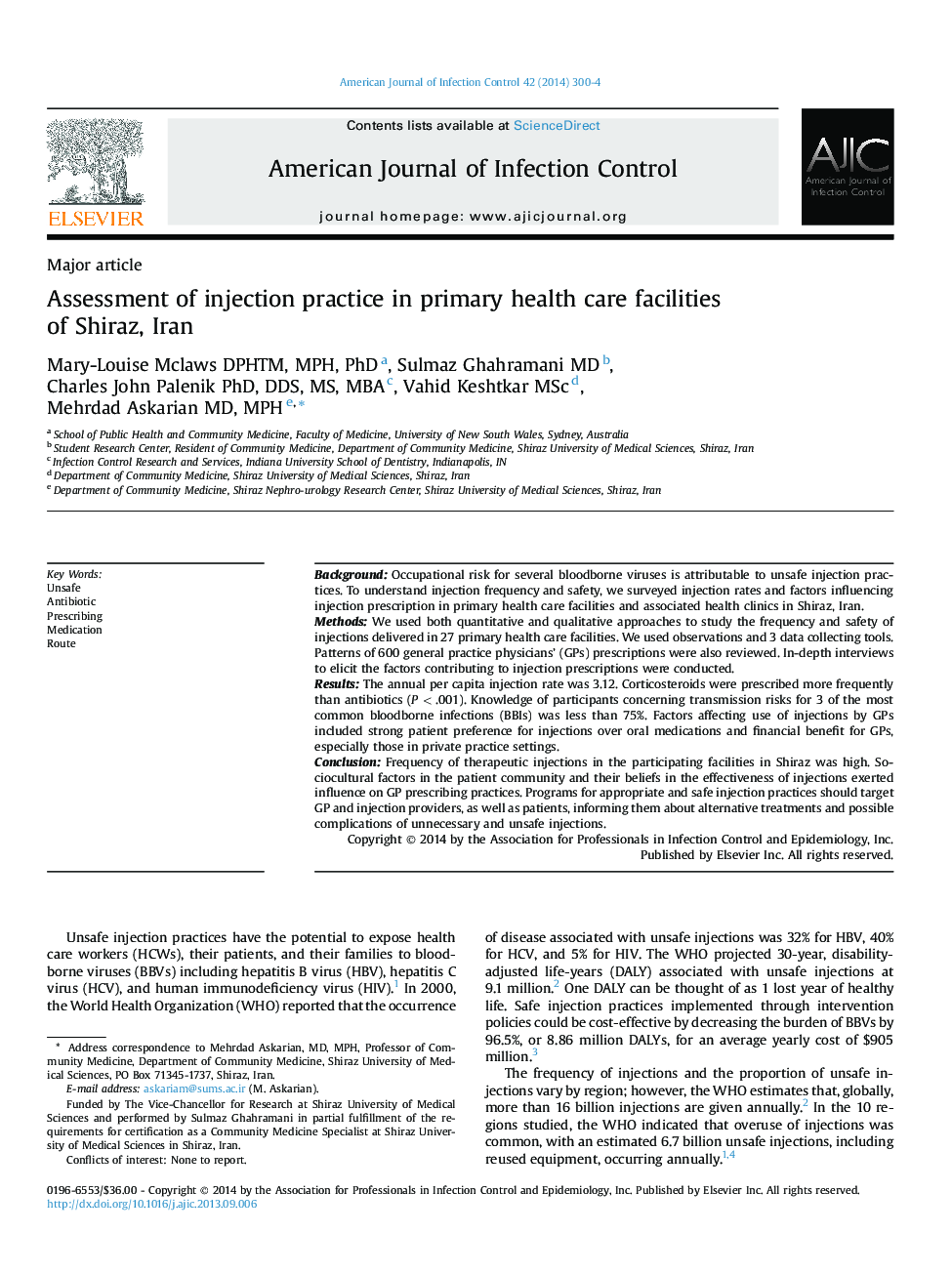| Article ID | Journal | Published Year | Pages | File Type |
|---|---|---|---|---|
| 2637666 | American Journal of Infection Control | 2014 | 5 Pages |
BackgroundOccupational risk for several bloodborne viruses is attributable to unsafe injection practices. To understand injection frequency and safety, we surveyed injection rates and factors influencing injection prescription in primary health care facilities and associated health clinics in Shiraz, Iran.MethodsWe used both quantitative and qualitative approaches to study the frequency and safety of injections delivered in 27 primary health care facilities. We used observations and 3 data collecting tools. Patterns of 600 general practice physicians' (GPs) prescriptions were also reviewed. In-depth interviews to elicit the factors contributing to injection prescriptions were conducted.ResultsThe annual per capita injection rate was 3.12. Corticosteroids were prescribed more frequently than antibiotics (P < .001). Knowledge of participants concerning transmission risks for 3 of the most common bloodborne infections (BBIs) was less than 75%. Factors affecting use of injections by GPs included strong patient preference for injections over oral medications and financial benefit for GPs, especially those in private practice settings.ConclusionFrequency of therapeutic injections in the participating facilities in Shiraz was high. Sociocultural factors in the patient community and their beliefs in the effectiveness of injections exerted influence on GP prescribing practices. Programs for appropriate and safe injection practices should target GP and injection providers, as well as patients, informing them about alternative treatments and possible complications of unnecessary and unsafe injections.
